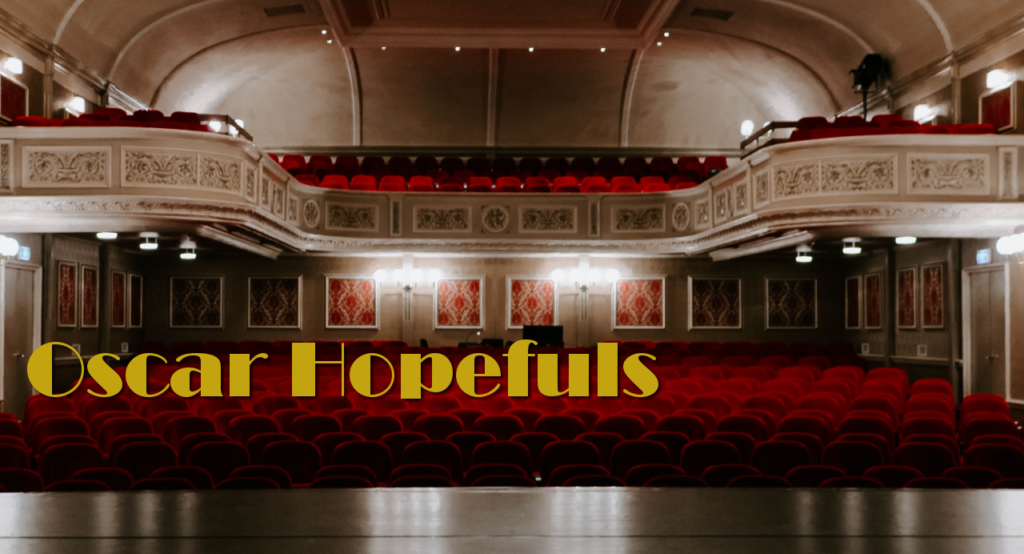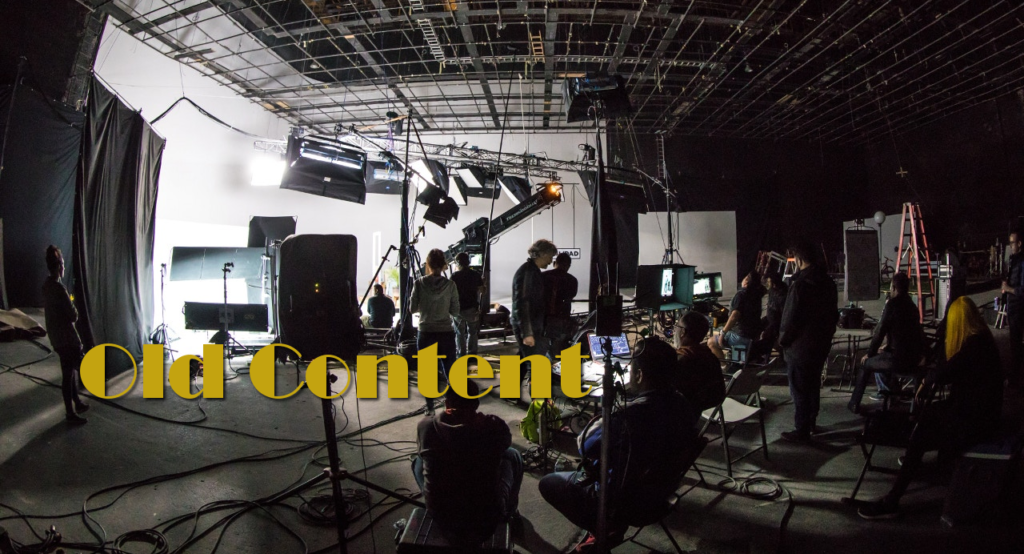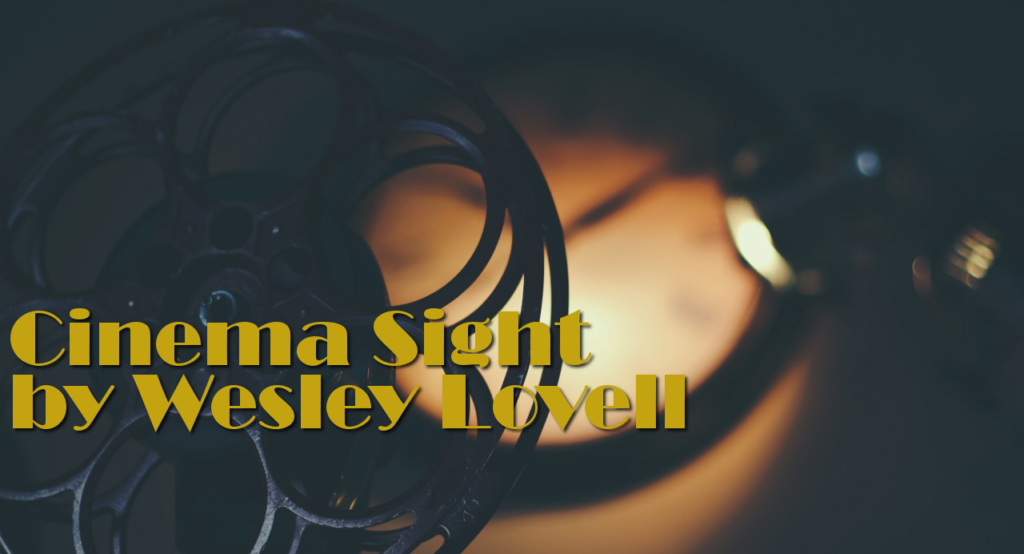
How many people do you know who watch scary movies on Halloween? I don’t watch them myself, nor do I know anyone who does, but in the days and weeks leading up the holiday there is no better way to get into the mood than to watch a few horror flicks back-to-back.
Horror films have been with us as long as moving pictures have been around. Some of the greatest films of the silent era were the horror films of maestros F.W. Murnau and Tod Browning. Moving into the sound era, horror films continued to thrive. The best of them have always been those that are more psychological in their terror than those heavy in blood and gore. We all have our own tastes, but I personally prefer films about vampires and werewolves to films about slashers and zombies. Here, in chronological order, are some of my favorites:
James Whale’s 1931 film of Frankenstein was the second of three horror films that created a successful franchise for Universal that lasted for the better part of two decades. While the original Dracula betrayed its stage origins and The Mummy moved a bit slowly even by early-1930s standards, Frankenstein was perfectly pitched and paced, mixing heart and whimsy with the fantastical, its most poignant scene being the accidental drowning of a little girl who befriends the creature. Boris Karloff’s star-making performance as the creature still blows all imitators off the screen. Colin Clive is almost as good as Dr. Frankenstein, as is Dwight Frye as his assistant.
Though it had been filmed successfully as a silent with John Barrymore in 1920, and would be filmed many more times, the 1931 version of Dr. Jekyll and Mr. Hyde remains the most celebrated. Director Rouben Mamoulian was a pioneer in opening up early sound movies and this film was no exception, with freedom of movement belying the film’s handful of sets. The on-screen transformation of Fredric March from Dr. Jekyll to Mr. Hyde still thrills with a “how did they do that” amazement. The sex scenes are highly suggestive, even for pre-Code Hollywood, but, alas, Miriam Hopkins’ famed nude scene is not among those restored for the DVD release.
H.G. Wells provided the source material for Whale’s 1933 classic, The Invisible Man, which, like Frankenstein, Dracula and The Mummy, later provided a successful franchise for Universal, even though it took them another seven years to make more Invisible films. Claude Rains lent his commanding presence to the role of the scientist who invents a drink to make himself invisible and lives to regret it. A young Gloria Stuart was his fiancée and the hilarious Una O’Connor all but steals the film as Rains’ screaming landlady.
Whale returned to Mary Shelley for his masterpiece, the great Bride of Frankenstein, one of a handful of sequels in film history that outshines the original. Karloff is back as the creature, even more sympathetic than before as he continues his adventures among the living. Clive returns as Dr. Frankenstein, but as his wife, Clarke is replaced with Valerie Hobson. The wonderful supporting cast includes Ernest Thesiger as Dr. Pretorius, O.P. Heggie as the hermit, Una O’Connor as a screaming villager, and the wonderful Elsa Lanchester in a dual role. She plays both authoress Shelley in the film’s prologue and the title character, a bride not for the increasingly mad Dr. Frankenstein, but for his creature.
Tod Browning’s most successful talkie was 1931’s Dracula, after which he directed the controversial Freaks, arguably his greatest directorial achievement in the sound era. For my money, however, his best film of the sound era was 1936’s The Devil-Doll. Sort of a horror version of The Count of Monte Cristo. Lionel Barrymore plays a respected Parisian banker falsely accused of a crime and sent to Devil’s Island. He later escapes and returns to Paris to seek vengeance on those who wronged him. Disguised as a little old lady who sells intriguing little dolls that are actually shrunken human beings he controls telepathically, Barrymore is a hoot. Maureen O’Sullivan is quite touching as his unsuspecting daughter.
Lon Chaney Jr. had his greatest role as Lenny in 1939’s Of Mice and Men, but it was in his father’s footsteps in the 1941 horror classic, The Wolf Man, that he had his most famous one. Another huge cash cow for Universal, the Wolf Man series lasted for years. Chaney’s sympathetic werewolf in the original, is surrounded by a cast of then-better-known actors, including Claude Rains, Warren William, Ralph Bellamy, Patric Knowles, Bela Lugosi and Maria Ouspenskaya, but it is Chaney who emerges as a star thanks to his portrayal of an everyman caught in a hopeless situation.
Oscar Wilde’s classic novel, The Picture of Dorian Gray, provided the source material for one of the most intriguing films of all time. Hurd Hatfield, an actor who in real life hardly aged even though he lived into his 80s, played the title character whose portrait, hidden in an attic, ages while he remains forever young. Highly atmospheric and filled with a sense of dread, the performances of Hatfield, George Sanders as an amoral cad (what else?) and Angela Lansbury as a young innocent are the stuff of legend. Late in life Hatfield came into possession of the original painting of himself as a young man used in the film. How bizarre it must have been to enter his home and see the picture hanging there.
A short story by Robert Louis Stevenson was the source material for 1945’s The Body Snatcher, one of several small budget classics made by producer Val Lewton for RKO in the mid-1940s. Directed by Robert Wise, who would go on to win Oscars for West Side Story and The Sound of Music, the film stars Boris Karloff as the title character, a grave robber who finds cadavers for mad doctor Henry Daniell in the performance of his career.
Vincent Price was no stranger to gothic horror or villainous roles when he played the disfigured sculptor in1953’s House of Wax, but this full-color, 3-D remake of 1933’s Mystery of the Wax Museum (included as a bonus on the DVD) is the film that opened up a whole new career for him as one of the great horror film stars. Phyllis Kirk is the screaming heroine.
Pandering to audience fears of an imminent Communist takeover of the U.S., 1956’s ominous Invasion of the Body Snatchers has remained unsettling long after such fears have subsided. Don Siegel, later of Dirty Harry fame, directed Kevin McCarthy as the small town doctor who tries to warn the world of alien takeovers of human bodies before it is too late. Its premise proved even more unsettling when it was remade as 1978’s Invasion of the Body Snatchers in which the action shifted to San Francisco.
In the late 1950s, Britain’s Hammer Films revived Universal’s first three horror franchises; initially producing new versions of Frankenstein, Dracula and The Mummy saturated in blood. While 1957’s The Curse of Frankenstein and 1959’s The Mummy were both popular, spawning sequels for years, it was 1958’s Horror of Dracula that caused the biggest sensation. The film was especially terrifying to audiences not terribly familiar with Bram Stoker’s novel or any of the myriad versions of the story and didn’t know that Jonathan Harker is not the ultimate hero. What happens to him is truly horrific. The film made international stars of character actors Peter Cushing as Van Helsing and Christopher Lee as Dracula.
Alfred Hitchcock, having long been regarded as the master of film suspense, turned his attention to TV and a highly successful anthology series, Alfred Hitchcock Presents, in the 1950s. Utilizing the TV sets and much of his TV crew, Hitchcock chose to turn to horror to make his first black and white film in years. Robert Bloch’s novel was the source material for 1960’s Psycho, which stirred immense interest with the gimmick that no one would be seated after the start of the film. Bernard Herrmann’s thrillingly creepy score and Anthony Perkins’ equally-thrilling and creepy performance set the tone for what remains one of the most shocking films ever. The shower scene with Janet Leigh caused millions, including Leigh herself, to vow never to take a shower again.
Jack Clayton’s The Innocents afforded Deborah Kerr a rare foray into horror as the easily-unhinged governess in this 1961 film of Henry James’ The Turn of the Screw, co-scripted by Truman Capote. This psychological ghost story set in a remote turn-of-the-century English estate plays extremely well on a double bill with Robert Wise’s equally-eerie film of Shirley Jackson’s The Haunting with Julie Harris and Claire Bloom made two years later.
William Wyler won his still-record twelfth and last Best Director Oscar nomination for 1965’s The Collector based on the disturbing novel by eccentric British author John Fowles ( The French Lieutenant’s Woman). Terence Stamp as the butterfly collector who turns his attention to the opposite sex and Samantha Eggar as the woman he kidnaps to add to his collection are both excellent.
Ira Levin’s great New York novel was the source material for 1968’s Rosemary’s Baby. Roman Polanski’s film sticks to its original milieu brilliantly, filming in and around the famed Dakota apartment building and other NYC locations. Mia Farrow is perfectly cast as the expectant mother not having an easy pregnancy as is John Cassavetes as her not-exactly-what-he-seems husband, but it is the supporting cast that gives the film its extra punch. Ruth Gordon is at turns hilarious and frightening in her Oscar-winning role as the witch next door, Sidney Blackmer is mesmerizing as Gordon’s warlock husband, Ralph Bellamy is properly sinister as Mia’s too-smooth doctor, Maurice Evans is wise but foolish as Mia’s old friend, and ace comedienne Patsy Kelly is menacingly unfunny as another witch in the coven.
The most terrifying horror film of all time isWilliam Friedkin’s 1973film of William Peter Blatty’s The Exorcist, adapted for the screen by the author. Based on an actual exorcism performed in Washington, D.C. some years earlier, the character of the mother was based on Shirley MacLaine whom the author had known. The director, whom he seems to take special delight in killing off, was based on J. Lee Thompson (The Guns of Navarone). The novel and the film were especially shocking to Catholic audiences as much of the film centers on the blasphemy of the devil as he takes over the body of a young girl and the mind of a troubled priest. The special effects are legendary and the acting sublime, with Ellen Burstyn as the actress-mother, Linda Blair as the possessed girl, Jason Miller as the troubled priest, Max von Sydow as the elderly exorcist, and Jack MacGowran as the director proving especially fine. An unbilled Mercedes McCambridge chills to the bone as the voice of the devil.
TV director Richard Donner had his first major big screen success with 1976’s The Omen, an unsettling account of the devil’s spawn switched at birth with the son of the U.S. Ambassador to Italy, played by the estimable Gregory Peck, and his wife, lovely Lee Remick. An imminent sense of doom hangs over the production that doesn’t let up until the final frame. Equally good is the 1978 sequel, Damien – Omen II with William Holden as Peck’s brother.
Brian De Palma’s film of Stephen King’s first published work, 1976’s Carrie, is arguably both the best film made from a King novel and the best film De Palma has ever made. Sissy Spacek gives a performance for the ages as a mistreated high school senior with telekinetic powers. She’s almost matched by Piper Laurie as her religious fanatic mother. There are strong supporting performances from William Katt, Amy Irving, Nancy Allen, John Travolta and Betty Buckley. If the film has a flaw, it’s the killing off of Buckley’s sympathetic teacher, something that didn’t happen in the novel.
Not a film per se, but an excellent TV mini-series, Tobe Hooper’s 1979 version of Stephen King’s Salem’s Lot makes up for its disappointingly-cheesy special effects with a thoughtful script and excellent acting by a cast of Hollywood veterans in support of TV stars David Soul and Lance Kerwin. They include James Mason as a mysterious antiques dealer, and Lew Ayres, Bonnie Bedelia, Elisha Cook Jr., Marie Windsor, and Ed Flanders as various vampire fighters and victims.
Far better than its repulsive sequels might lead you to believe, 1988’s Child’s Play is an intelligent thriller in which the soul of an executed murderer inhabits a life-like doll given to a six year old as a birthday present. Catherine Hicks is the unsuspecting mother, Chris Sarandon the detective who tries to solve the murders by conventional means and Brad Dourif the voice of “Chucky”. Tom Holland ( Fright Night) directed.
M. Night Shyamalan showed great promise with 1999’s The Sixth Sense in which psychiatrist Bruce Willis tries to help ten-year-old Haley Joel Osment who sees dead people. It’s highly watchable even if you know or guess the film’s major deceit. A surprise hit, it earned six Oscar nominations including one for Osment and another for Toni Collette as his mother.
If you’re not into horror movies, another suggestion for this week might be to watch a festival of Deborah Kerr films in honor of the beloved star who died last week of Parkinson’s Disease. Among her many films available on DVD, I highly recommend Black Narcissus, From Here to Eternity, The King and I, An Affair to Remember, Heaven Knows, Mr. Allison, Separate Tables, The Sundowners and The Night of the Iguana in lieu of, or in addition to, The Innocents mentioned above.
Peter J. Patrick (October 23, 2007)
Buy on DVD!
Use Each Title’s Link
Top 10 Rentals of the Week
(October 7)
- Surf’s Up
$8.13 M ($8.13 M) - Fantastic Four: Rise of the Silver Surfer
$7.29 M ($16.8 M) - Reign Over Me
$7.09 M ($7.09 M) - Evan Almighty
$6.42 M ($6.42 M) - Knocked Up
$5.83 M ($24.3 M) - 28 Weeks Later
- Next
$3.92 M ($16.5 M) - 1408
$3.23 M ($3.23 M) - We Are Marshall
$2.73 M ($14.7 M) - The Condemned
$2.68 M ($13.8 M)
$4.42 M ($10.6 M)
Top 10 Sales of the Week
(September 30)
- The Jungle Book
- Fantastic Four: Rise of the Silver Surfer
- Knocked Up
4. 1408 - The Devil Wears Prada
- We Are Marshall
- Entoruage: Season Three, Part 2
- Next
9. Barbie as the Island Princess - The War: A Film by Ken Burns
New Releases
(October 23)
- Adventures of Aquaman
- Adventures of Young Indiana Jones
- Burt Lancaster – The Signature Collection
- Fantastic Planet
- Hamish Macbeth
- I Love Lucy
- Into Great Silence
- Meet the Robinsons
- Monarch of the Glen
- NCIS
- Tales from the Crypt
- The L-Word
- The Sopranos
- 2001: A Space Odyssey
- Veronica Mars
- Voyage to the Bottom of the Sea
Coming Soon
(October 30)
- Barbara Stanwyck – The Signature Collection
- CSI: Miami
- Family Affair
- Help!
- Looney Tunes Golden Collection – Vol. 5
- Magnum P.I.
- My So-Called Life
- Mystery Science Theater 3000, Collection 12
- No End in Sight
- October Road
- Scrubs
- Spider-Man 3
- Talk to Me
- Three Stooges Collection 1934-1936
- Twin Peaks
(November 6)
- The Best of the Colbert Report
- Chinatown
- The Cosby Show (5)
- The Cosby Show (6)
- Deck the Halls
- Doctor Who (3)
- Doctor Who: Arc of Infinity
- Doctor Who: Time-Flight
- Flight of the Conchords (1)
- Full House (8)
- Full House (Complete)
- James Bond Ultimate Collector’s Set
- The King of Queens (Complete)
- Leading Ladies Collection 2
- Project Runway (3)
- Ratatouille
- Seinfeld (9)
- Seinfeld (Complete)
- Sicko
- Wildfire (2)
- Wings (5)
(November 13)
- Amazing Grace
- Berlin Alexanderplatz
- Close Encounters of the Third Kind
- Flywheel
- Gilmore Girls (7)
- Gilmore Girls (Complete)
- Melrose Place (3)
- Northern Exposure (Complete)
- Ocean’s Eleven, Twelve, Thirteen
- Paris, je t’aime
- The McCartney Years
- Perry Mason (2, Vol. 2)
- The Princess Bride
- Shrek the Third
- This Is England
- Tony Bennett: The Music Never Ends
- La Vie en Rose
- With a Song in My Heart
(November 20)- Batman (4)
- Broken
- CSI (7)
- Eric Clapton: Crossroads Guitar Festival 2007
- Hairspray
- Led Zeppelin – The Song Remains the Same
- Live Free or Die Hard
- Love American Style (1, Vol. 1)
- Mission: Impossible (3)
- Pooh’s Super Sleuth Christmas Movie
- Queer as Folk (Complete)
- Rescue Dawn
- Sawdust & Tinsel
- Star Trek: The Original Series (1)
- The Lady Vanishes
- The Santa Claus 3: The Escape Clause
- The Wild Wild West (3)


















Leave a Reply
You must be logged in to post a comment.